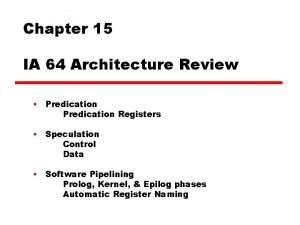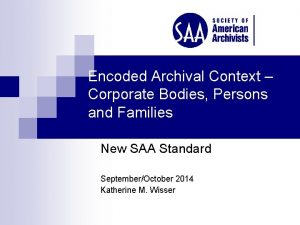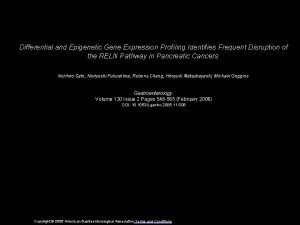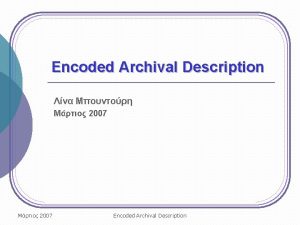Screening I Screening 1 Phenotypic Screening Protein encoded







- Slides: 7

Screening I Screening: 1. Phenotypic Screening – Protein encoded by the gene present in the plasmid changes the color of the colony. 2. Protein expressed by a defined gene can be detected with specific antibodies

Blue-White Screening • For screening the clones containing recombinant DNA, a chromogenic substrate known as X-gal is added to the agar plate. • If β-galactosidase is produced, X-gal is hydrolyzed to form 5 -bromo-4 -chloro-indoxyl, which spontaneously dimerizes to produce an insoluble blue pigment called 5, 5’-dibromo-4, 4’-dichloro-indigo. • The colonies formed by non-recombinant cells, therefore appear blue in color while the recombinant ones appear white. • The desired recombinant colonies can be easily picked and cultured. 2

Screening II 3. DNA sequence of a cloned gene can be detected with a DNA hybridisation probe.

Screening III • Following the screening and isolation of colonies they can mass produced by culturing in broths! • These can be stored at -80°C for years!

DNA Libraries • DNA Library: In molecular biology, collection DNA fragments produced and stored in microbial populations are called DNA libraries!!! • They are collection of living bacterial colonies transformed with different DNA fragments obtained from different organisms those form source of DNAs • These gene libraries are screened and researchers work with colonies carrying the genes of interest! • There also c. DNA libraries and gene libraries established from genomic DNA!

c. DNA ve Gene Library Applications Why do we need them? • For identification of new genes • In vitro investigation of gene functions (c. DNA molecule cloning) • m. RNA expression analysis from diverse cell and tissues • Whole genome identification of specific organisms i. e. (human genome project or other genome projects) • Establishment of genomic sequence resources for the production of transgenic animals • In vitro investigation of regulatory sequence functions • Investigation of genetic mutations in cancer tissues

c. DNA I • Eucaryotic DNA is different from a bacterial (procaryotic) DNA, since it has intron (intervening sequences) ve exon (expressed or translated sequences) sequences. • In order for an eucaryotic gene to be expressed, introns should be excised from m. RNA following transcription!













